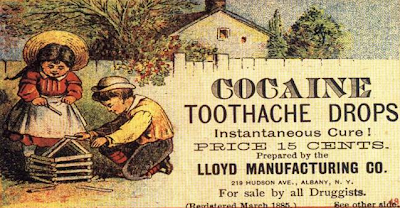In a previous
post, I discussed what I new about my immigrant gg-grandmother, Rose. Rose, although ethnically German, immigrated with her family from Lorraine, France. The 1900 Census lists their immigration year as 1860, although the 1920 Census states that the family arrived in 1855. I believe the latter is the correct date as I was able to locate an immigration record on the Ship William Tell that arrived in New York in 1855. There are a few discrepancies, but most of what I know is supported by these records.
What is beyond dispute, however, is that Rose was a widow with four children by 1879. The surviving children were: Rose -age 15, Julius - age 14, Julia - age 12, and Eliza (Alice) - age 6. The 1880 Census lists Rose and her four children living in the same residence as her older sister, Catherine, and younger brothers, Victor and Nicolas. They were living at 288 W. 6th St. in downtown Cincinnati. All but the three youngest children were listed as working in a "Stamping and Embroidery" business, apparently owned by the family. Young Rose was also working in the store, but her brother, Julius is listed as working in a candy store.
For the times, I can imagine that the children were very fortunate. They were raised in a home with four adults including two men who could serve as father figures. Frequent occupations for women at the time included being a seamstress, milliner, embroiderer or similar. Sure beats taking in laundry!
The women in my family were quite good at this. We have a few remaining pieces of their work. The one at the left in incomplete. The one to the right was embroidered by the younger Rose. It was a hat liner for her husband, James Hugh Ryan. I'm told that Rose also embroidered beautiful flowers on her wedding dress. It was obviously a labor of love for these women.
As far as I know, three of Rose's siblings (Catherine, Victor and Alice)never married. Victor, who was a Civil War Veteran of a cavalry unit, was listed as a "harness maker" in the 1900 Census. All are buried in St. John's Cemetery in St. Bernard, Ohio -- all in unmarked graves.
Final note: The 1900 Census lists Rose Gross living with three of her children at 851 Findlay Ave. Her siblings, Victor, Katharine and Alice are living a few doors away at 838 Findlay. By then Rose was receiving a Civil War Pension based on her husband, Charles', service in the military. By 1900, the family was using "Baker" for their surname, the "Americanized" version of Becker. It's interesting to note that by 1910, they reverted back to Becker.
Source Citation for Passenger List
 Pam kindly agreed to send me pictures of the framed wedding dress. I don't know what the top looked like, but I can't believe the detail in the skirt portion. I tried to enlarge part of the embroidery so that you can have an appreciation of the handiwork involved in the dress.
Pam kindly agreed to send me pictures of the framed wedding dress. I don't know what the top looked like, but I can't believe the detail in the skirt portion. I tried to enlarge part of the embroidery so that you can have an appreciation of the handiwork involved in the dress.



























